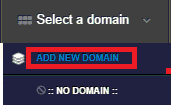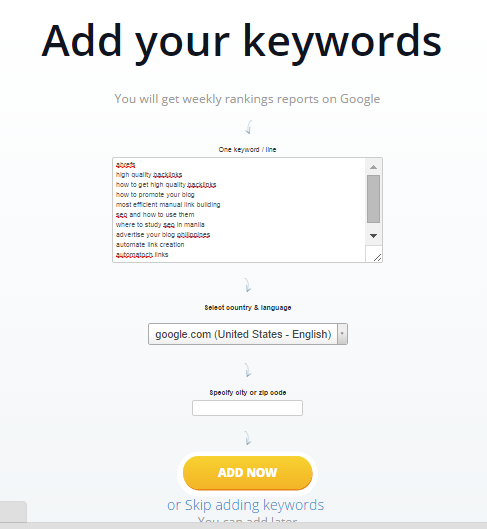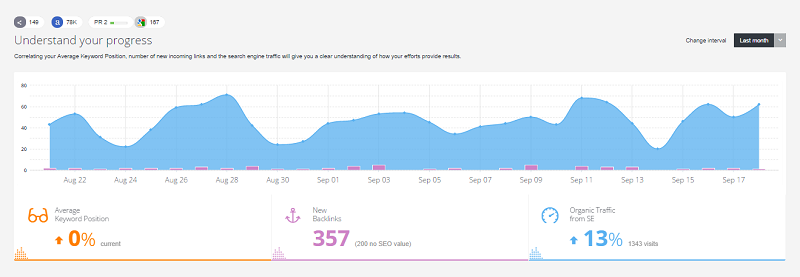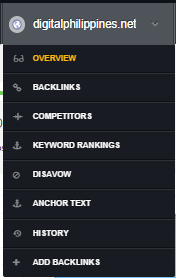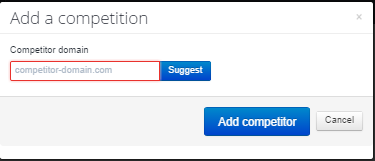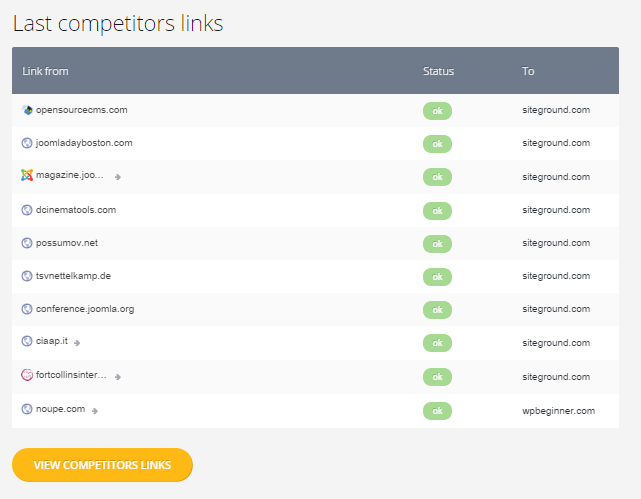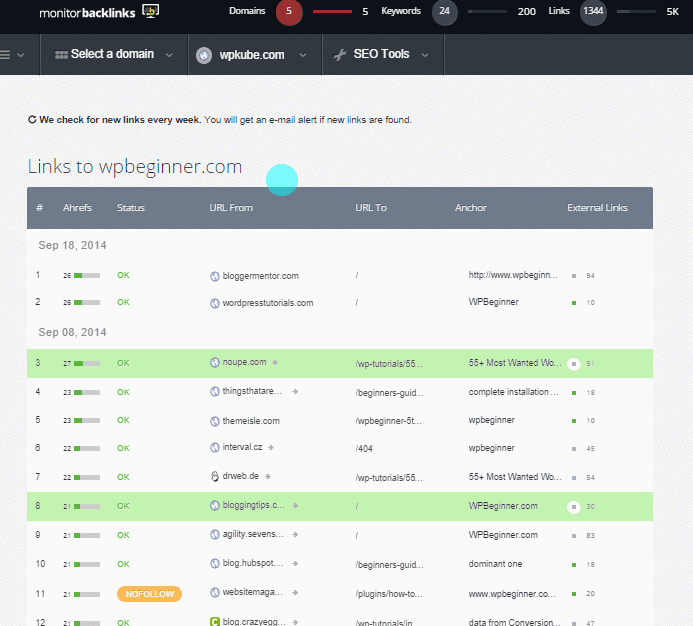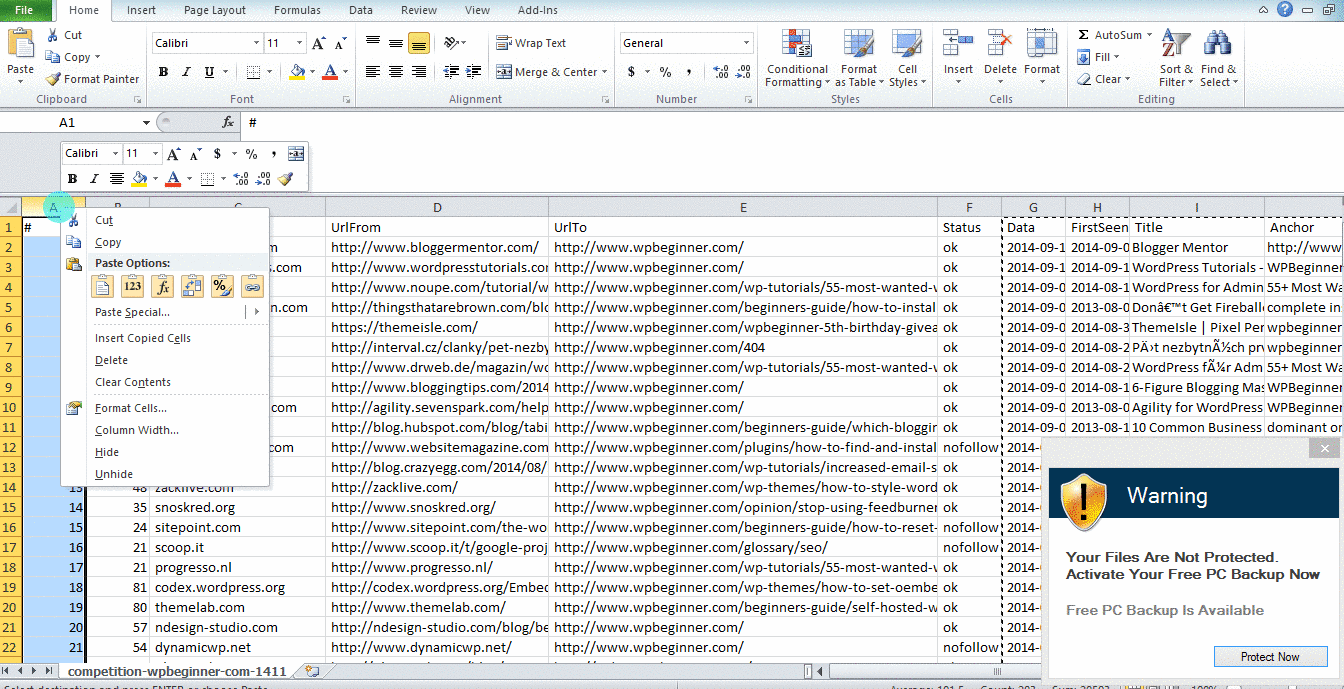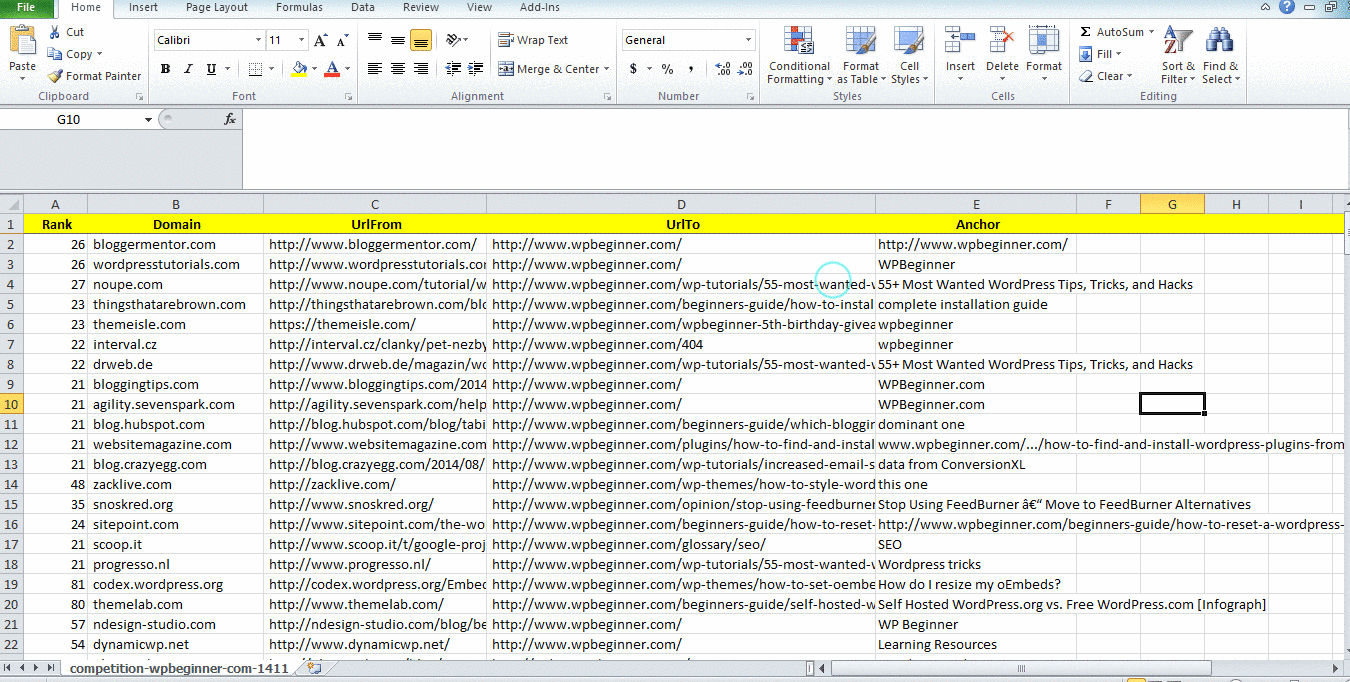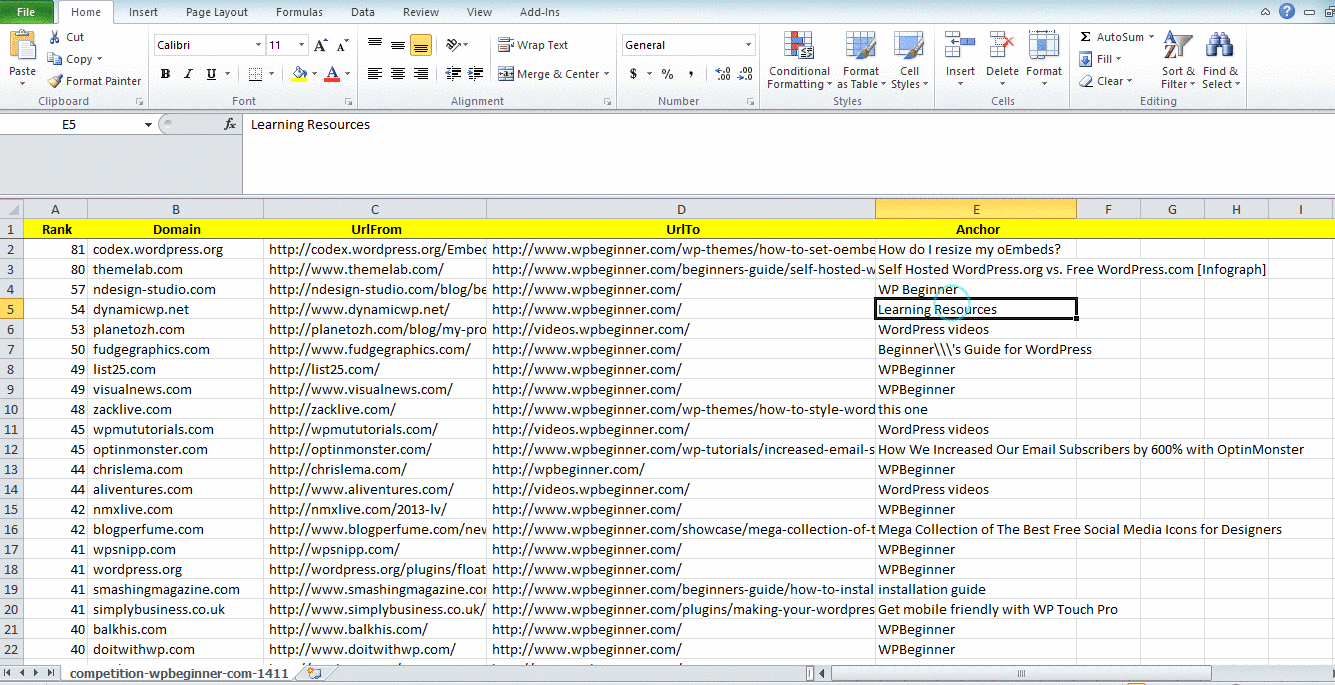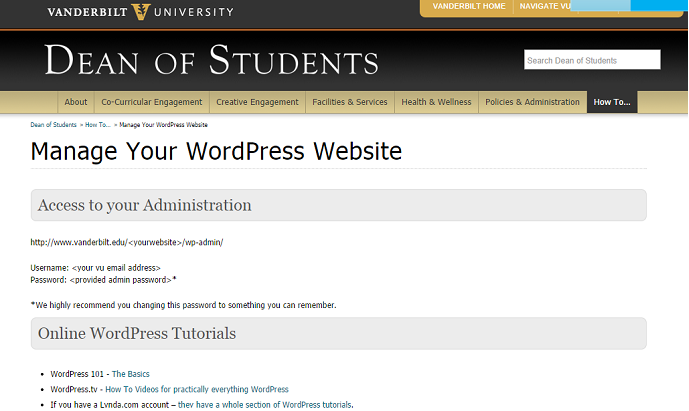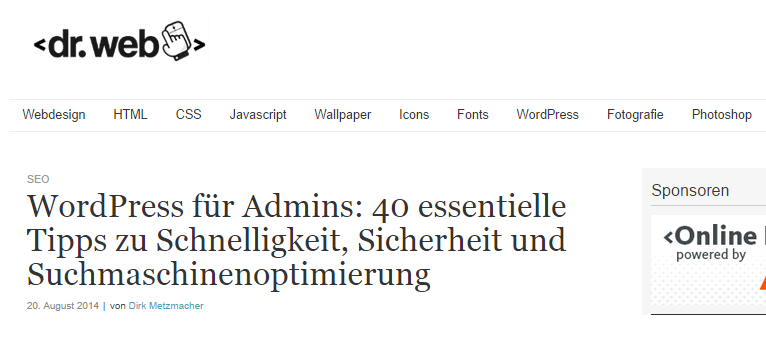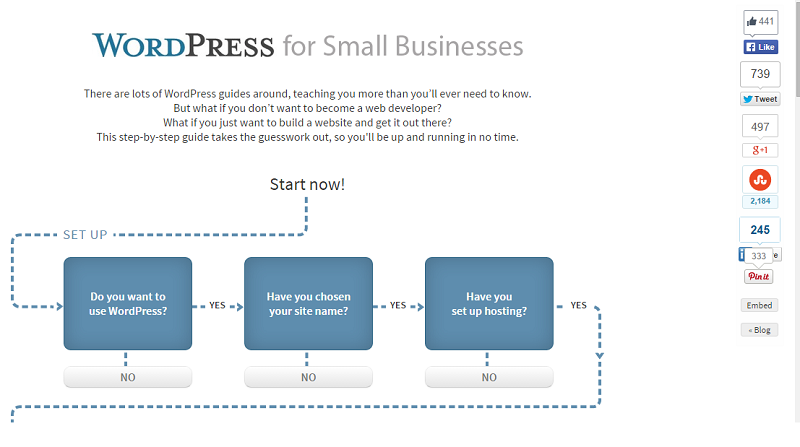by Venchito Tampon Jr | Last Updated on October 24, 2021
One of the difficult aspects of link building is finding websites or pages that can link out to your content or domain and bring targeted traffic to your website.
If you can’t find a relevant and high quality page to target for link building, then it’s impossible to increase links in your website’s link profile.
This problem can be solved by monitoring incoming links (new) pointing to websites that are related to your brand (whether or not they are your competitors).
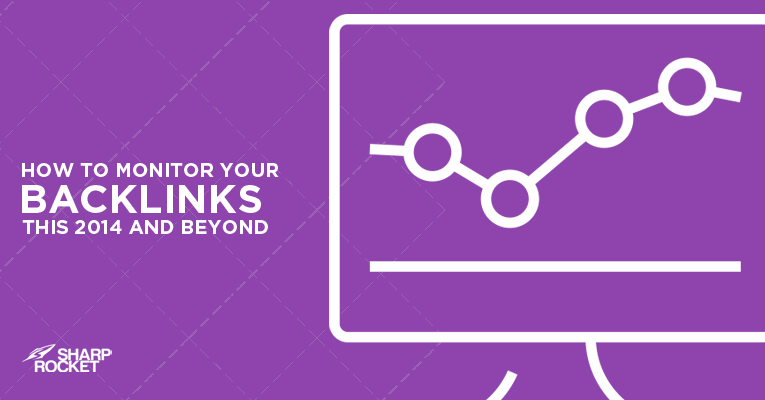
Monitoring backlinks will help you in your link building activities such as:
- Easily prospect pages that linked out to your competitors (those who’re rendering the same product/service).
- Analyze the linking behavior of bloggers and webmasters in your space so you can easily plan a strategy that will guarantee links to your website.
- Plan how you can build links from websites in similar industries that your competition has no clue about.
- Create a content that is targeted to audiences of sites linking to your competitors that are likely to link to your website as well.
Becoming a proactive link builder rather than a reactive one can help you win the competition given that you’re the first one to find link opportunities that your competitors haven’t thought of yet.
Now the question is, how can you monitor backlinks of your competitors and even similar sites from related industries all at the same time?
The answer is to use Monitor Backlinks tool.
Table of Contents
Side Note: I’m a giving a discount coupon for those who want to purchase Monitor Backlinks (see the coupon code below).
What it does is that it allows you to monitor your links (obviously) of your domain as well as of your competitors all in just a single platform.
Let’s go first with monitoring links pointing to your website/domain.
Monitor incoming links to your domain
There are many reasons why you should start monitoring incoming backlinks to your website, but here’s a few ones you should consider:
- To build stronger connections with bloggers and linkers in your industry (those who linked to your content) by sending thank you messages to their emails.
- To identify which of your blog posts are highly linkable and which type of content you would want to invest further to attract more editorial links to your website.
- To document the number of links you are earning every month (so you can leverage some of your linking activities to add more numbers to your link profile).
With the above reasons, you should have now decided to monitor backlinks to your domain.
Monitor Backlinks tool has an easy to use and understand platform. If you’re a newbie in the industry, then this may work for you very well.
If you wish to monitor your website, you simply go to the Select a domain tab and choose Add New Domain.
Choose between the two buttons:
- Add Domain (yellow) – if you have a Google Analytics account in that domain, then choose this
- Add domain without Google Analytics – self explanatory
If you choose the first option, then select the Google Analytics profile of that domain.
Then click Add Domain.
Add the websites of your competitors or just skip this step if you wish not to monitor links of your competitors.
If you want to track rankings of keywords you’re targeting for your website, then add them to the next step (add your keywords).
When done, you should now see this platform.
Monitor incoming links of your competitors
You have an option to add the website of your competitor or a non-competitor site that is also targeting your audience.
If you’re working on a teen driving website you can choose a parent driving blog (non-competitor) as a domain for link monitoring.
This way you’ll have chances of finding link opportunities that your competitors haven’t thought of.
Now, if the tool allows you to add four competitors, choose two non-competitor websites for backlink monitoring and leave the other two for your competitors.
How to add domains of your competitors
Click on your website, then choose Competitors in the drop down menu.
Click Add new competitor.
Add the website of your competitor and click Add competitor button.
Now you can already track links of your competitors. If you wish to see your competitors’ links straight in the dashboard of Monitor Backlinks, simply scroll down the page.
Here’s a quick overview of the dashboard (competitors’ links).
There is an export button that you can click on if you want to get a spreadsheet of all the monitored links.
Getting value from link monitoring
It’s very easy to monitor links of your competitors and similar websites in your industry, but the most challenging part is to actually think of how you can maximize those link data to improve your link building campaign.
To get more insights from monitored links, you have to export them from the Monitor Backlinks dashboard.
Once you have the spreadsheet, you need to remove columns that are unnecessary to make decisions from link monitoring.
The spreadsheet should now have columns for:
- Ahrefs Rank/Rating
- Domain
- URL From
- URL To
- Anchor
Sort the links by increasing Ahrefs rating/rank to get a quick overview of the first hundreds high quality links.
Homepage links
If you consider building homepage links as your top priority, then you should only focus on pages in the URL From tab that only points out to homepage links in the URL to tab.
These are pages that are intended to link out to the homepage URL of your competitor.
You can also use the Anchor column of the spreadsheet to sort links based on their linking purposes (i.e. links pointing to homepage URL only).
See the quick tutorial below to sort links based on branded anchor texts (e.g WPBeginner or WPBeginner.com).
You can get homepage links for your website by focusing on two types of links (pointing to your competitors).
- Internal pages (i.e. blog posts) pointing to your competitor’s homepage (e.g. Top WordPress Resource Websites in 2014)
- Blogroll links using branded anchor texts (e.g. WPBeginner).
We’re only talking about probability of linking here not the certainty that those pages/links would definitely link to your homepage. There are cases that linkers would love to link to your content and not directly to your homepage (e.g. a list of best wordpress resources page linking to your content).
Deep links
If you’re looking for some deep links for your website, then you can use the spreadsheet to see websites who linked to your competitors’ deep pages.
All the URLs in the URL To column are internal pages of your competitors that earned links from pages in the URL From column.
If you will analyze how each of those linking to pages (URL From) linked to your competitors’ pages, then you can think of a strategy to possibly get links from those pages.
Examples of tactics you can use for each competitor’s linking page/site
Participate in offline local niche communities
This type of local niche meet-up is hard to find if you will not consistently monitor links in your space.
What to do with this kind of event?
- Invest your time in participating in this local niche community. Given that participants are part of your target audience, you have a high chance to get some coverage for your brand (when they start to write about you and your brand on their own blogs).
- Become a regular sponsor if you have a huge budget set for marketing/promotion. Links will follow from bloggers in your space (e.g. news, stories or blog posts about what they learned during the event) once you start doing some sponsorships.
- Show your expertise by speaking in the event. Links won’t be guaranteed using this approach but regular blog readers and additional subscribers are some returns you can obtain from public speaking.
Suggest a resource to a .Edu website
I know this is a common link building technique but if you’re adding a few texts to your outreach email, then you can get a higher conversion rate in your link building outreach.
You can add these sentences below to make your outreach more effective:
[Competitor’s content] has been a valuable resource for me since I started to learn about [topic]. Would you mind if I suggest a few more resources that you can add to your page?
Offer your content to be translated to other languages
If you published a content that is very well received by your audience, then you can offer your content to non-English blogs to publish in other languages.
Get featured on popular niche interview series
One benefit of monitoring links in your space is that you’ll be able to discover interview posts featuring your competitors (bloggers/authors).
You can then reach out to those blogs who conduct interviews and ask if they’re still looking for more interviewees to cover on their blogs.
Make sure you send them links that show your expertise and experience about certain subjects you want to be known for to increase the odds of being interviewed on those sites
Get inspirations for your next content asset
Link monitoring will help you find ideas/topics from successful content pieces that are already published on the web.
You won’t need to replicate the exact content but just get insights on why and how it managed to get hundreds of shares and attract editorial links
This example shows that a high quality illustration guide best resonates the non-techy people including small business owners.
Monitor Backlinks Tool – Discount Coupon
I’m giving away 67% less discount for your first 3 months use of Monitor Backlinks. Just enter this coupon code: OFF50NHT7KZHX and get the discount right away.
This is an exclusive offer this week, so don’t miss this out!
The Author
Venchito Tampon Jr
Venchito Tampon is a Filipino Motivational Speaker, Corporate Trainer, and a Leadership Speaker in the Philippines. He is the CEO and Co-Founder of SharpRocket, a link building agency. With a decade of experience, Venchito has a proven track record of leading hundreds of successful SEO (link builidng) campaigns across competitive industries like finance, B2B, legal, and SaaS. His expert advice as a link building expert has been featured in renowned publications such as Semrush, Ahrefs, Huffington Post and Forbes. He is also an international SEO spoken and has delivered talks in SEO Zraz, Asia Pacific Affiliate Summit in Singapore, and Search Marketing Summit in Sydney, Australia. Check out his other businesses, Hills & Valleys Cafe, Blend N Sips and Saas Pursuit.
How our LINK BUILDING AGENCY builds 250 links/mo consistently using Predictable Link Building Methodology™…
- Using a SIMPLE and PROVEN system
- Using a SCALABLE strategy
- No private blog networks
- No creepy outreach emails

